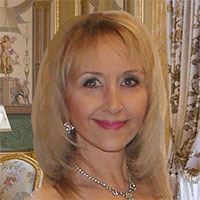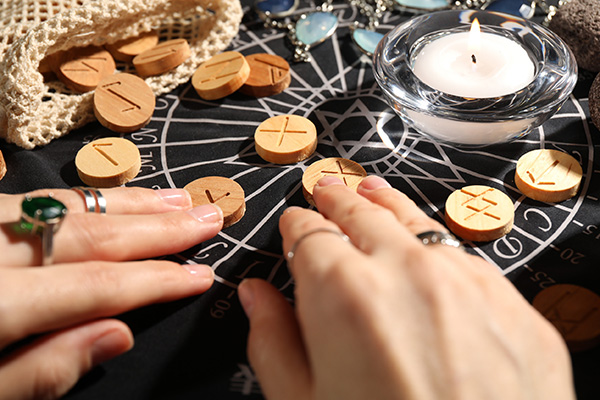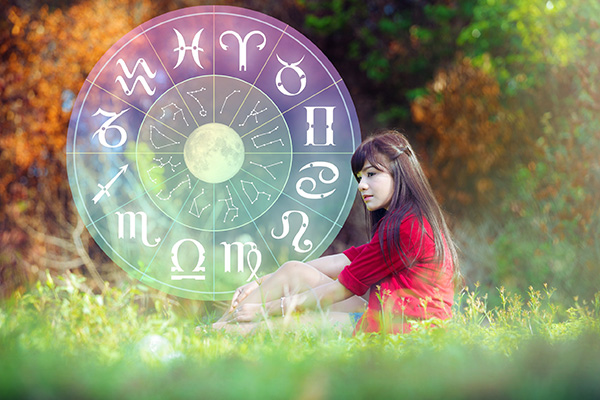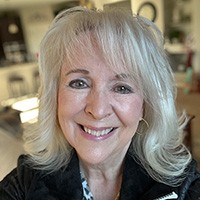 We’ve all experienced those moments when we become our own harshest critics. In times of self-reproach and pessimism, we convince ourselves that we lack beauty, wealth, intelligence, youth, thinness, talent… and the list could continue endlessly.
We’ve all experienced those moments when we become our own harshest critics. In times of self-reproach and pessimism, we convince ourselves that we lack beauty, wealth, intelligence, youth, thinness, talent… and the list could continue endlessly.
While some self-reflection can be natural, for many it evolves into a persistent cycle of self-inflicted suffering — a continuous stream of negative thoughts that influences their reality.
Negative thinking and critical self-dialogue can significantly impact both our mental and physical health. Ongoing self-critique contributes to anxiety, depression, and diminished self-esteem, frequently resulting in feelings of despair and lethargy. Physically, this mindset elevates stress levels and compromises the immune system, rendering us more vulnerable to illness.
Furthermore, beyond the psychological and biological realms, this behavior has metaphysical ramifications — it serves as a self-fulfilling prophecy. The more we assert that we are unworthy, inept, or unfortunate, the more deeply these beliefs grow within our energy. Eventually, they take shape as tangible occurrences in our lives, reinforcing the negativity we strive to overcome.
The encouraging aspect? Just as negative thoughts impact our reality, so too do positive thoughts. By realigning our mental energy to focus on uplifting, empowering, and constructive ideas, we elevate our energetic frequency. Over time, this internal change yields concrete outcomes — our confidence increases, fresh opportunities emerge, and life starts to feel more enriching.
This isn’t about denying the difficulties we face or pretending that everything is flawless. It’s about selecting our reactions. Rather than perceiving setbacks as failures, we can view them as lessons learned. Instead of dwelling on absences, we can concentrate on possibilities.
Life is either a grand experience or a minor one, depending on the quality and nature of the thoughts we entertain ~ Norman Vincent Peale
The power of our thoughts is immense. By intentionally steering them toward growth and potential, we can reshape our reality — crafting a life characterized by greater joy, resilience, and purpose.
The Spiritual Perspective on Positivity
Historically, many spiritual teachings have asserted that our thoughts mold our reality. Whether drawn from ancient philosophies or contemporary metaphysical beliefs, numerous traditions highlight that the universe reflects back to us what we send outward. Below is how various spiritual philosophies have grasped and embraced the transformative essence of thought:
Hinduism: As one of the oldest spiritual paths, it teaches that our perception of the world is an illusion (maya) fashioned by our thoughts and observations. The Bhagavad Gita, a revered Hindu scripture, reveals that our minds and thoughts shape our reality, and mastering them can lead to spiritual liberation (moksha). Through practices like meditation and self-control, individuals can rise above illusion and connect with the universe’s divine essence.
Buddhism: Highlights the significance of thought in molding reality. The Buddha stated that our experiences stem from our thoughts and intentions, and by nurturing positive mental states, we can alter our lives and ultimately reach enlightenment (nirvana). The karma doctrine further illustrates this principle, demonstrating that our actions and thoughts instigate the conditions shaping our present and future.
Gnosticism: An ancient mystical belief that emphasizes esoteric knowledge (gnosis) as pivotal for spiritual awakening. Gnostics maintain that the physical realm is a flawed or deceptive creation of a lesser deity, and true freedom is achieved by recognizing the divine spark within. By acquiring higher wisdom and transforming perception, individuals can liberate themselves from the physical world’s illusion and return to divine consciousness.
Kabbalah: This mystical aspect of Judaism teaches that the universe is a reflection of divine thought. By comprehending its structure, we can mold our reality. The exploration of the Tree of Life and the Ten Sefirot (Divine Attributes) uncovers how divine energy manifests into existence, demonstrating that our consciousness serves as a channel for transformation. By contemplating these sacred designs and aligning our thoughts with divine intelligence, we engage in the continual act of creation, yielding both spiritual and material fulfillment.
Hermeticism: Covering a broad spectrum of esoteric wisdom, including alchemy, astrology, and theurgy, this tradition holds the tenet of “as above, so below,” asserting the interconnection between the macrocosm and microcosm. By comprehending and aligning with divine principles, individuals can transform their consciousness, affect their reality, and reach spiritual enlightenment. Hermetic writings stress that mastering thought and will enables one to manifest change in both internal and external realms.
Christianity: The Bible contains numerous passages emphasizing the influence of thoughts and beliefs on shaping reality. Proverbs 23:7 states, “For as a man thinks in his heart, so is he.” Likewise, in Matthew 17:20, Jesus asserts, “Truly I tell you, if you have faith as small as a mustard seed, you can say to this mountain, ‘Move from here to there,’ and it will move. Nothing will be impossible to you.” Throughout the Gospels, Jesus emphasizes that faith and belief are directly linked to healing and miracles, showcasing that spiritual conviction holds the power to shape physical reality.
Sufism: The mystical sector of Islam, Sufism teaches that our thoughts and desires shape our spiritual journey and connection to the divine. Through meditation, chanting (dhikr), and devotional acts, Sufis dissolve material illusions and unveil the unity of self and God. By cleansing the mind and heart, they attain direct encounters with divine love, affirming that reality mirrors inner awareness.
Rosicrucianism: This mystical order believes that hidden knowledge and spiritual enlightenment can be accessed through diligent study of esoteric wisdom. Rosicrucians assert that thoughts and intentions are determinant in shaping reality, enabling practitioners to refine both their inner existence and the outer universe. Through self-transformation and the quest for higher wisdom, individuals awaken their dormant spiritual potential and become co-creators of their fate.
Alchemy: Beyond the pursuit of turning lead into gold, alchemy is the ancient sacred science of soul transmutation, demonstrating that our internal world influences our external reality. Alchemists hold that the material and spiritual spheres are intertwined, and through focused intention, purification, and enlightenment, one can achieve spiritual perfection. With mastery of thought and will, individuals undergo inner transformations that reveal their divine nature, underscoring the malleability of reality itself.
Theosophy: This tradition conveys that our thoughts and beliefs are not only impactful but are fundamentally woven into the very fabric of the universe, shaping our individual and collective experiences. Theosophists assert that aligning with divine wisdom allows us to transcend illusion and reach elevated levels of consciousness. Through rigorous spiritual discipline, introspection, and service to humanity, individuals can advance on the path to enlightenment and realize spiritual liberation.
Hermetic Order of the Golden Dawn: Established in the late 1800s, the Golden Dawn is based on the notion that reality is crafted by will, intention, and esoteric knowledge. Drawing upon hermeticism, kabbalah, alchemy, and astrology, its teachings highlight that mastering thought and ritual empowers individuals to shift awareness and realize desired outcomes. Engaging with divine archetypes and spiritual forces, initiates harness the creative might of the mind to alter themselves and their environment.
New Thought Movement: Emerging in the 19th century, this spiritual movement accentuates the power of thought, positive thinking, and the Law of Attraction as methods for personal metamorphosis and well-being. Rooted in the concept that the mind directly impacts reality, New Thought asserts that we generate our own life experiences through the deliberate focus of our thoughts, emotions, and affirmations. By harmonizing thoughts with favorable outcomes, individuals can attract desired experiences and significantly influence their health, success, and overall life circumstances.
New Age Movement: A contemporary spiritual wave that surfaced in the late 20th century, it incorporates several esoteric traditions such as Theosophy, Eastern spirituality, and Western mysticism. The movement emphasizes personal spiritual evolution, holistic well-being, and the interconnectedness of all existence. With a strong emphasis on the mind’s capability to construct reality, New Age philosophy merges concepts of manifestation, vibrational energy, and quantum consciousness to encourage individuals to actively engage in crafting their experiences.
Across spiritual traditions, the notion that thought shapes reality has been a core tenet guiding seekers toward enlightenment and transformation. By mastering our thoughts, fostering faith, and aligning with divine wisdom, we unlock the potential to shape our lives and manifest the reality we choose.
Positive thinking transcends mere buzzwords; it alters our behavior. I genuinely believe that a positive mindset enhances my well-being and that of others around me ~ Harvey Mackay
The Science Behind Positivity
No matter your belief system, scientific studies have consistently demonstrated that optimistic thinking and positivity yield tangible benefits for both physical and emotional health. Beyond enhancing mental clarity and bolstering the immune system, an optimistic perspective has been associated with improved cardiovascular health and increased lifespan. Here are some additional examples highlighting the effects of positive thinking:
Mental Health: A systematic analysis published in the Journal of Happiness Studies illustrates the influence of optimism on adolescent mental health, indicating that it can serve as a predictor, mediator, and protector of mental wellness. An article on iResearchNet delves into the multifaceted psychological benefits tied to an optimistic outlook, which includes reduced stress and anxiety, improved coping strategies, and enhanced mental well-being.
Psychological Resilience: As reported by Johns Hopkins Medicine, individuals with a positive outlook are one-third less likely to experience a cardiovascular event within a span of five to 25 years compared to negative thinkers. This finding emphasizes the role of positive thinking in bolstering psychological resilience and mitigating risks for heart-related ailments.
Immune Function: Research from Harvard Medical School has shown that optimism can favorably affect immune function through various biological mechanisms. Optimistic individuals often display lower stress hormone levels, such as cortisol, which, when elevated, can hinder immune responses. Furthermore, a positive mindset correlates with diminished inflammatory markers, crucial for immune system regulation. These results suggest that maintaining a positive viewpoint may enhance immune functionality by regulating stress-related hormones and inflammatory responses.
Cardiovascular Health: A study published in Frontiers in Psychiatry found that positive psychological well-being correlates with better heart health and a lower likelihood of cardiovascular disease occurring. The research indicates that individuals with heightened positive emotions experience lower blood pressure and heart rates, which contribute to improved overall heart health.
Longevity: Insights from the National Institute on Aging reveal that higher optimism levels are linked to longer lifespans and a better chance of living past age 90. The study indicates that optimistic individuals may engage in healthier habits and more effectively manage stress, leading to increased longevity.
These examples represent only a fraction of the extensive research confirming how an optimistic mindset can positively influence numerous facets of our health and overall well-being.
You are the accumulation of everything you’ve ever encountered, known, consumed, sensed, or learned — it all resides within you. Every experience impacts each of us, which is why I strive to ensure my experiences are positive ~ Maya Angelou
Ways to Foster a Positive Mindset
A commonly heard saying is “garbage in, garbage out.” The concept is straightforward: our engagements—be they processed foods, negative social media content, or hurtful thoughts—directly influence the realities we manifest.
It’s not merely about maintaining a positive outlook; it’s about crafting an environment conducive to positivity. By surrounding ourselves with uplifting individuals, immersing in motivational content, and nourishing our bodies with healthy foods, we establish the foundation for a vibrant, full life.
On the flip side, when we fixate on negativity — whether through toxic relationships, fear-inducing news, critical self-talk, or self-destructive thoughts — we fabricate an inner world that mirrors that negativity externally.
Positive thinking resembles building a muscle. The mind operates similarly to a muscle — what we focus on and train ultimately strengthens it over time. Allowing negativity to prevail reinforces the habit of viewing the world through a negative lens. However, by practicing gratitude and optimism, we condition our minds to gravitate toward a more positive outlook.
Start with small steps. Here are some practical measures to help you reshape your thinking towards positivity:
Create a space for positivity: A prevalent excuse for avoiding positive shifts is the notion that we lack time. This, however, is a self-imposed barrier. The truth is that we prioritize what matters to us. Consider how much time we mindlessly spend scrolling through social media, watching TV, or engaging in activities that don’t serve our well-being. If we devote even 15-20 minutes of that time to self-improvement, meditation, or affirmations, we can initiate lasting changes in our mindset.
Maintain a gratitude journal: Keep a small notebook with you for jotting down at least three positive occurrences each day — things you appreciate, moments that brought you joy, or progress you’ve made. Before sleeping, reflect on the day’s positive moments and set intentions for tomorrow. Over time, this practice of journaling positivity shifts your focus toward recognizing the good in your life.
Construct a vision board: If you lean towards visual cues, consider crafting a positivity-focused vision board. Populate it with images, quotations, and memories that elicit joy and motivation. Refer to it whenever you need a reminder of the positivity surrounding you.
Counter negative thoughts with affirmations: When a negative thought arises, challenge it with a positive affirmation. For instance, if you catch yourself thinking, “I am not enough,” challenge that thought by verbally affirming empowering statements like, “I am more than enough. I am capable and strong,” “I deserve happiness,” “I attract joy,” or “I align with my highest good.”
Practice visualization meditation: Visualization serves as a robust method for creating positivity. Try this straightforward meditation: Shut your eyes and envision a glass containing murky, negative energy. Picture yourself emptying it and replacing it with bright, golden light, symbolizing joy, love, and hope. Take a few deep breaths while imagining inhaling positive energy and exhaling negativity. Making this a daily exercise can assist in shifting your energy.
Positive thinking is powerful thinking. If you desire joy, fulfillment, achievement, and inner peace, begin by believing you have the power to attain those things. Focus on the positive aspects of life and anticipate favorable outcomes ~ Germany Kent
Select Positivity Today
Life is not merely about waiting for good things to happen—it’s about creating them. Positivity doesn’t simply fall into our lap; it requires deliberate choice, discipline, and lifestyle. The mind is an immensely powerful tool, and when we wield it positively, we unlock infinite potential. The universe reflects our thoughts, so why not opt for thoughts that mirror the life we genuinely aspire to experience?
As you advance into the remainder of the year, commit to yourself. Choose to appreciate the beauty in each day, recognize your strengths, and believe in the boundless opportunities that lie ahead. For if you can envision it, you can create it. And by consciously living with positivity, your life will unfold in ways more magnificent than you ever imagined.
|
 About The Author: Mystic Shelley About The Author: Mystic Shelley
Mystic Shelley is a five-star psychic, Reiki healer, clairvoyant, and empathic reader. She offers her clients truthful insights on past, present, and future events with the assistance of her trusted guides. She specializes in areas such as love, relationships, careers, finances, and life matters. Despite being born with gifts that would eventually identify her as a talented psychic, she initially did not embrace them. In her 30s, a chance encounter with an accomplished psychic set her on a path that awakened her abilities. With the gifts of clairvoyance and empathy, her psychic mentor helped her expand those talents to their fullest potential. Through experience, she has gained expertise and now has a growing base of dedicated clients who consistently praise her. Additionally, she has actively helped other psychics discover their own abilities. If you’re seeking honest and direct guidance, schedule a reading with Mystic Shelley now at PsychicAccess.com
|
Continue reading →
 The universe is stirring things up today and tomorrow, as a vibrant Aquarius Moon inspires us to shake things up! With the dawn of a new astrological year, fresh resolutions emerge. If you haven’t achieved those changes you promised yourself at the year’s start, here’s another opportunity to make the shifts you need to reach your goals.
The universe is stirring things up today and tomorrow, as a vibrant Aquarius Moon inspires us to shake things up! With the dawn of a new astrological year, fresh resolutions emerge. If you haven’t achieved those changes you promised yourself at the year’s start, here’s another opportunity to make the shifts you need to reach your goals.













